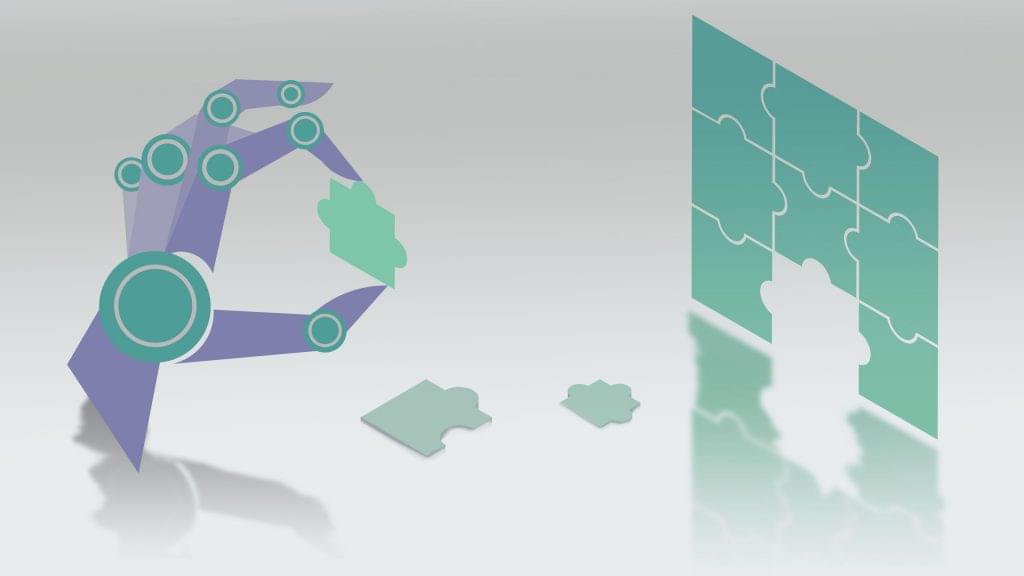Andrey Kovalev, VP of Engineering at Softengi, shares thoughts on the integration of no-code/low-code App Development Platforms and Robotics Process Automation in his article for Medium. He discusses how companies that make RPA solutions can benefit from cooperation with no-code/low-code Development Platforms vendors and thus make a great profit for both.
Find the origin of the article here.
What is Robotic Process Automation (RPA)?
The concept of Robotic Process Automation (RPA) has a long proven history and still wins many victories at the front of business routine automation. If we consider well-established notions of what an RPA is, it is worth mentioning the definition from IRPA (Institute of Robotic Process Automation & Artificial Intelligence):
“RPA is the application of technology that allows employees in a company to configure computer software or a “robot” to capture and interpret existing applications for processing a transaction, manipulating data, triggering responses and communicating with other digital systems.”
Most of all I like the definition given by one of the market leaders of RPA developers Blue Prism:
“Robotic automation refers to a style of automation where a machine, or computer, mimics a human’s action in completing rules based tasks.”
RPA software (so-called software robots) is a good chance to replace human beings for processes (full end-to-end business processes), where an employee takes inputs from one system (for simple instance, excel file), processes those inputs using well-defined and stable rules, and then enter the outputs into another system (for example ERP, CRM, GRC, etc.) In this context, a “robot” is the same as one instance of software installed on a computer or any target device. Traditionally, the software robot operates on the UI in the same way that a human does. This is a significant difference from traditional forms of IT integration, which have been historically based on API (or even data layer).
How RPA differs from BPM?

For business processes, the term RPA most commonly refers to configuring the software to do the work previously people did. At the same time, you should not confuse RPA with Business Process Management tools (BPM). RPA does not beat or replace BPM at all, but just supplements it. RPA and BPM are each suited to automating different types of processes. BPM solutions are helpful for processes requiring IT intervention (in a positive meaning) on high-valued IT solutions such as ERP, CRM, GRC systems. BPM solutions are deployed, developed and supported by IT professionals with corresponding skillset. There are two distinguishing moments of RPA software, which show the promising future of automating business processes with a low rate to enter and support this automation — it’s designed for non-programmers to use, and it does not change the status quo of existing systems. RPA solutions are deployed to environments by business employees with minimal/no help from the IT department.
Let’s consider some additional differences between RPA from Business Process Management tools and other automation systems:
- RPA solutions increase productivity with no or minimal (business) process change. Software robots are able to replicate human tasks without affecting underlying (with any level of novelty or legacy) IT infrastructure. As a result, the process in place is unchanged, eliminating data integration and analysis efforts. Hence, RPA systems look pretty safe for well-established processes of enterprises;
- The average employee of the business can create software robots without programming skills, just by easy steps of configuring them through the different intuitive wizards. The marketing materials of almost every RPA vendor state that its solution is a no-code opportunity for the average company employee from small business to enterprise to automate daily routine tasks performed within the IT infrastructure of the company without need to have knowledge of programming. Probably, typical, simple processes can be robotized without coding, but just in case, almost all RPA players have the opportunity to access the source code that special software recorders produce;
- Robotic Process Automation software takes an umbrella role for existing IT infrastructure. RPA technology sits on top of IT systems — without the need to create, change or additionally develop expensive (or legacy) platforms. RPA software accesses other IT systems the way a human does, through the UI with traditional authentication and authorization steps. So, it works only with the presentation layer of apps. Hence, this approach doesn’t touch data and business logic directly. That’s quite interesting that RPA as software is positioned not to store any of “its own” data. However, the last point could be considered a plus and a minus. It depends if there is a need to have as few control points as possible, which could look suspicious in the context of the insecurity issues. This differentiates RPA from BPM apps because BPM apps are invasive, create new apps, and access business and data layers of the apps in the IT infrastructure.
What Does “No-Code” (“Low-Code”) Stand For?

Let’s take a look at another tool that has the prefix ‘no-code’ (or in the more common version of ‘low-code’) in the name as well. It’s about no-code/low-code application development platforms.
No-code (Low-code) development platforms allow the creation of software through GUI and configuration (special wizards, administrative registries) instead of traditional programming (or with less programming). These platforms are traditionally focused on the design and development of data layers, business processes, or presentation layers such as web applications. Such platforms may produce entirely operational applications and require minimal (or no-) coding to extend the application’s functionality.
Low-code development platforms reduce the amount of traditional hand-code writing, enabling accelerated delivery of business applications. A common benefit is that a wider range of human beings can contribute to the application’s development, not only those with more formal programming skill sets. These platforms also lower the initial cost of setup, training, and deployment.
How to Integrate RPA and No-Code Platform to Make a Benefit?

The most important stage of implementing Robotic Process Automation in the organization is the moment when employees themselves start to write automation on their own. Automation, in turn, can represent for the employee a certain creative impulse (“I can speed up routine work and free up time for more interesting work”). It needs support from colleagues and management and is accompanied by new ideas. Often such a creative process generates the need to add new functionality and improve (add new views, reports with specific data) the current process.
It is necessary to emphasize here that this is not a change in the business process (since it is a complex task involving various authorized participants). It’s like a “near or top” addition (for example, a new combined register, a report variant, etc.). And this, often, goes beyond the no-code robot solutions (there is no need to take their bread from them, they are set here for a completely different purpose).
The problem can be solved in two variants. The first is to form an application for the IT department to refine one or another functionality. The second option is to give the employee an opportunity to create new functionality with the help of no-code app development platforms and integrate it with existing systems using both API and RPA (as a kind of “pseudo-API”).
Representatives of RPA vendors claim that they do not conflict with the responsibilities that BPM performs, it is deliberately emphasized. But if you take into account that RPA can be used as an integration between the no-code/low-code app development platform (and BPM is often part of such platforms) and the existing infrastructure, then a certain amount of blur is introduced in terms of precise positioning, which vendors now represent for potential customers. But from the point of view of the potential that can bring such steps and progress (let’s call it) of “civil development,” it can be an interesting breakthrough. The term “civil development” in this context means changing/developing software solutions neither by professional developers nor by representatives of the company’s IT department or subcontractor but by ordinary business employees who participate in a certain business process that do not have programming skills or have just a general understanding.
Given the progressive interest in Robotic Process Automation solutions accompanied by AI, in the near future, we should expect more complex “mergers” of different types of systems in the hands of the business operation staff, which will allow them to significantly automate and improve the existing IT infrastructure.




